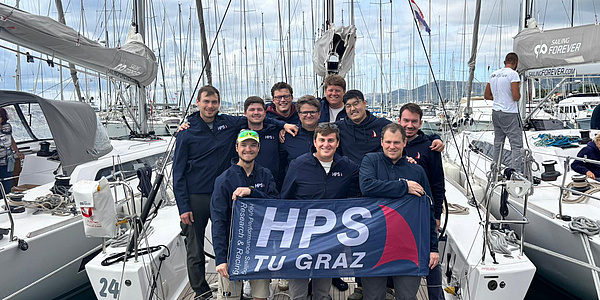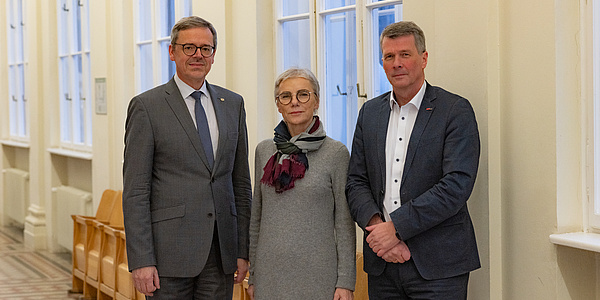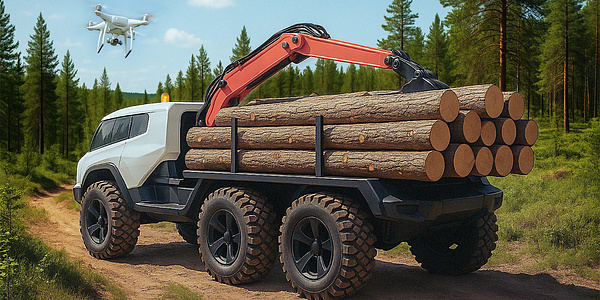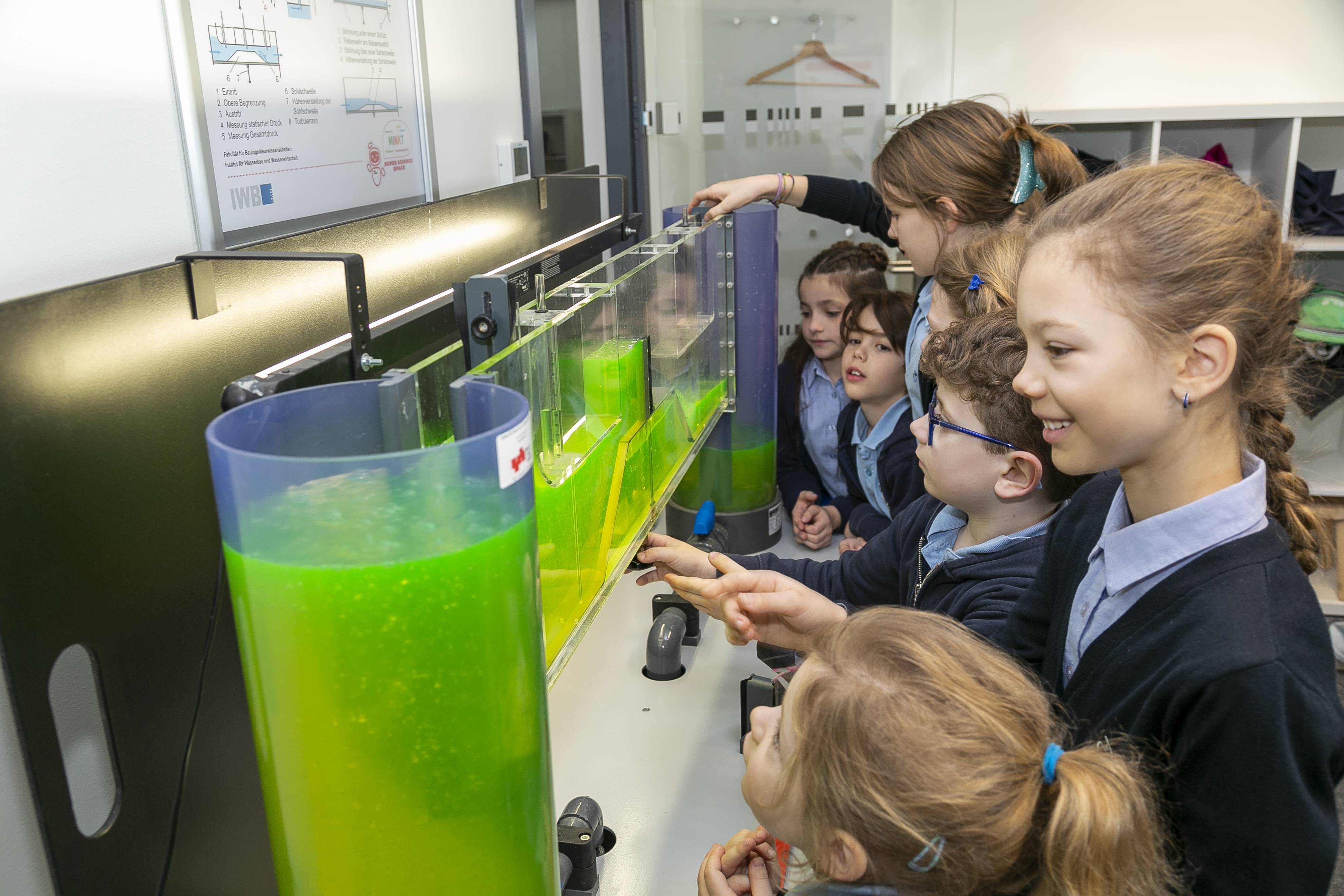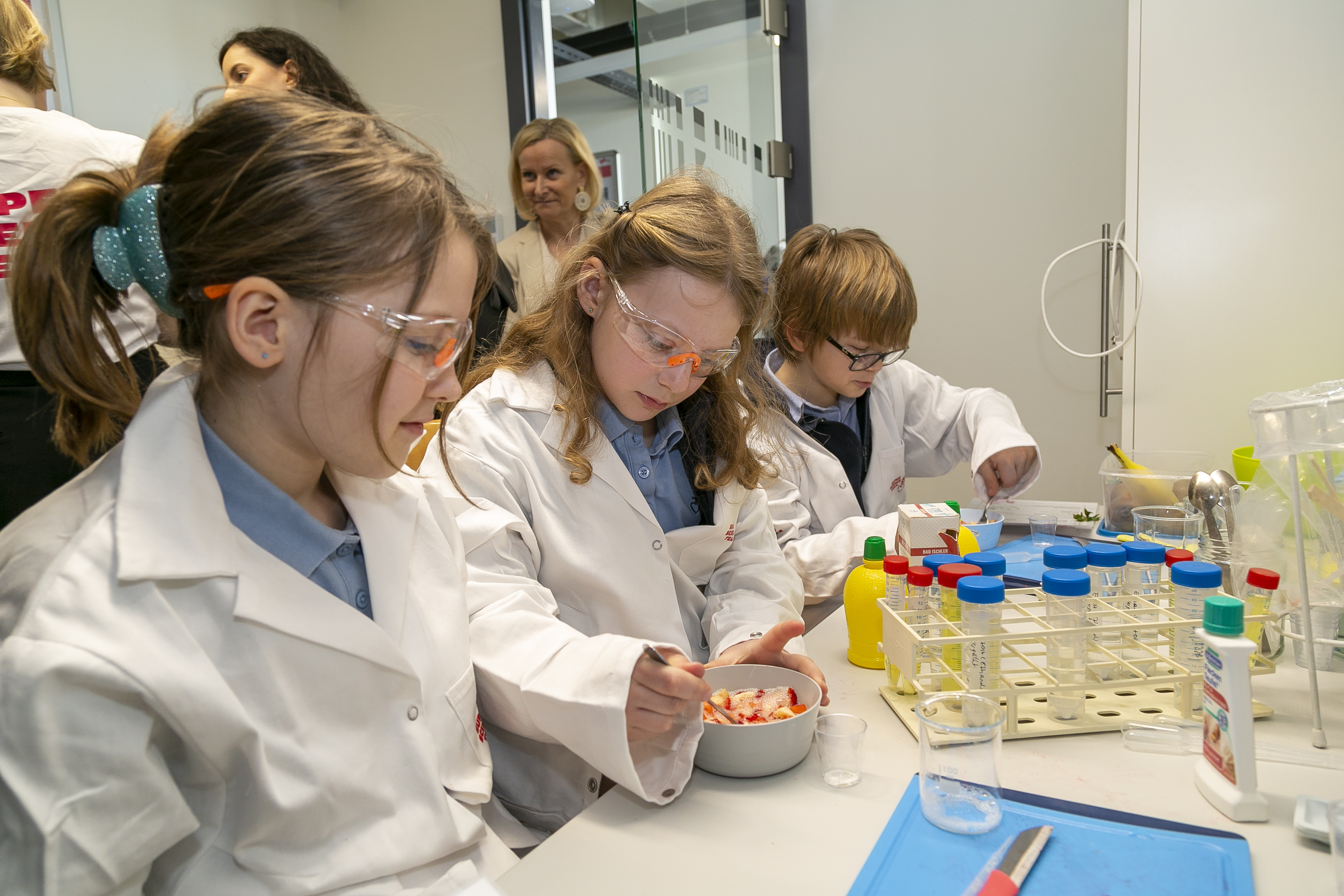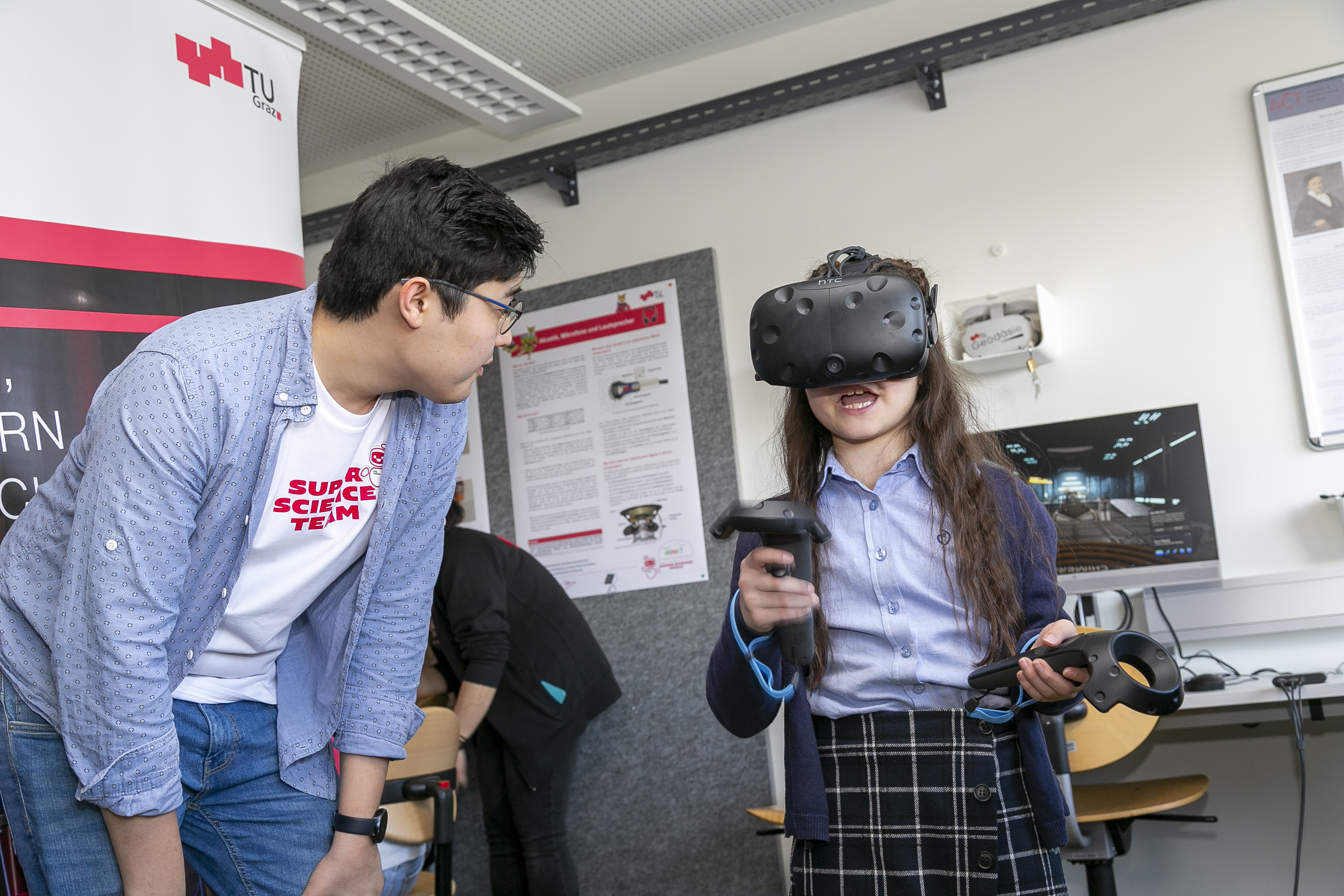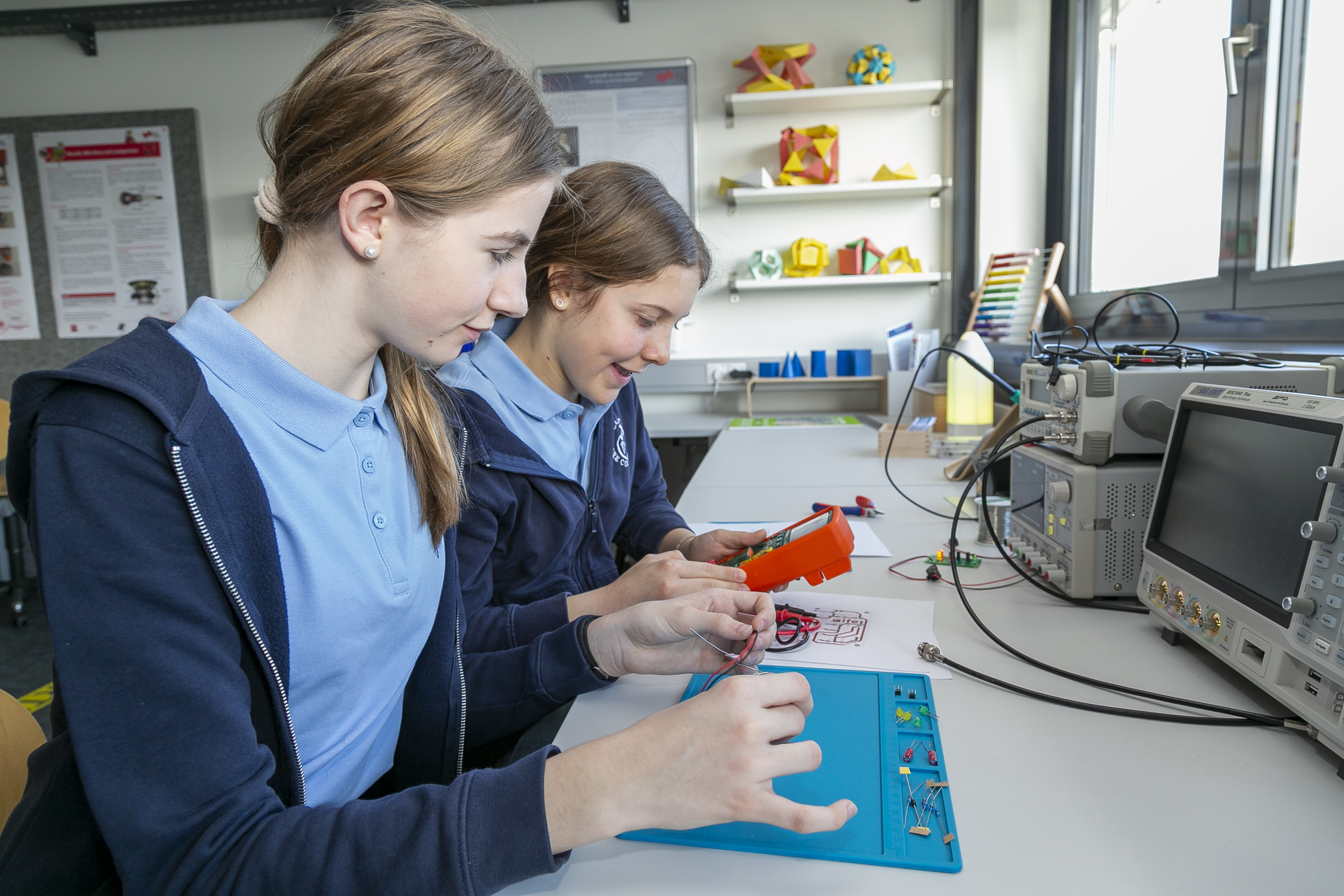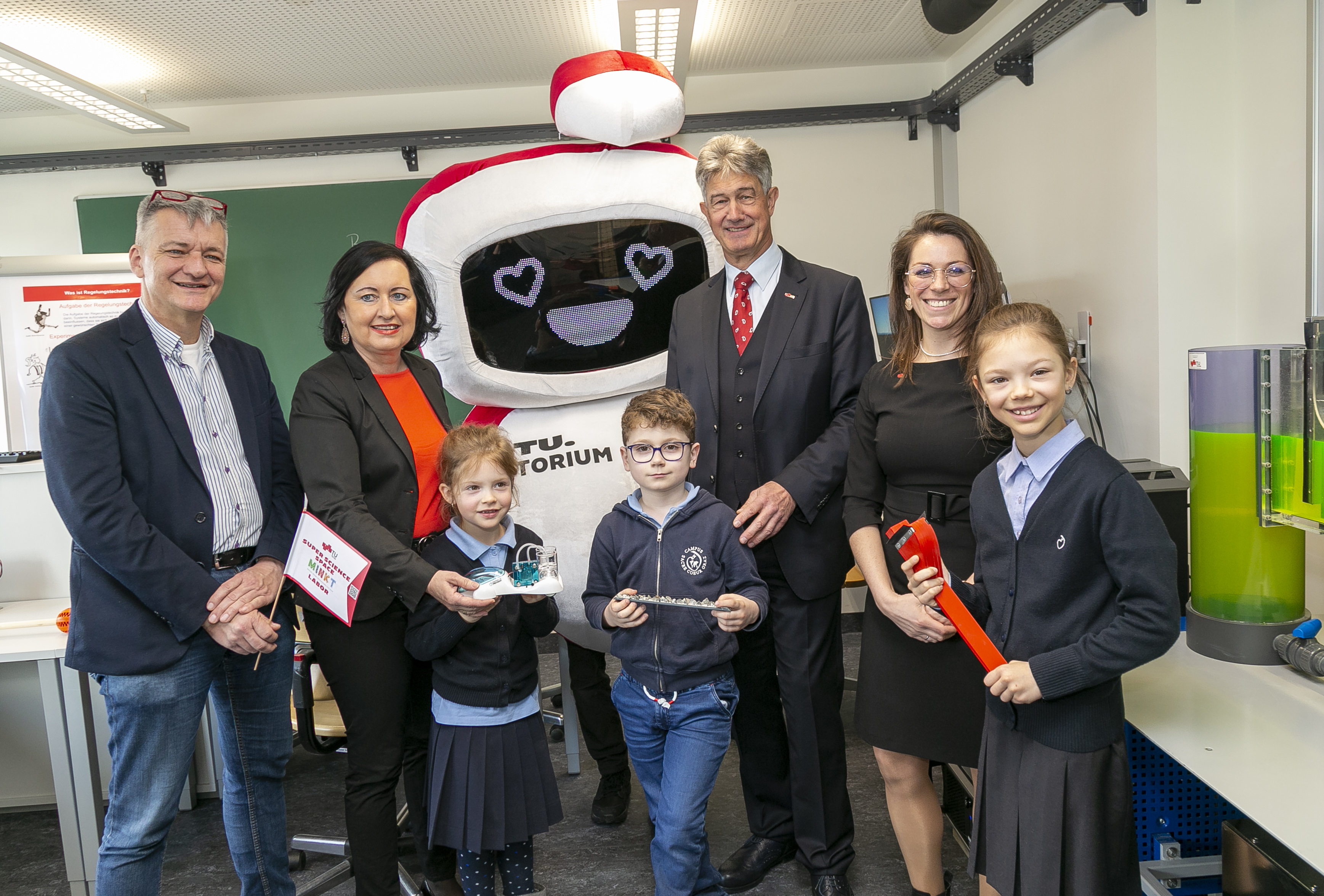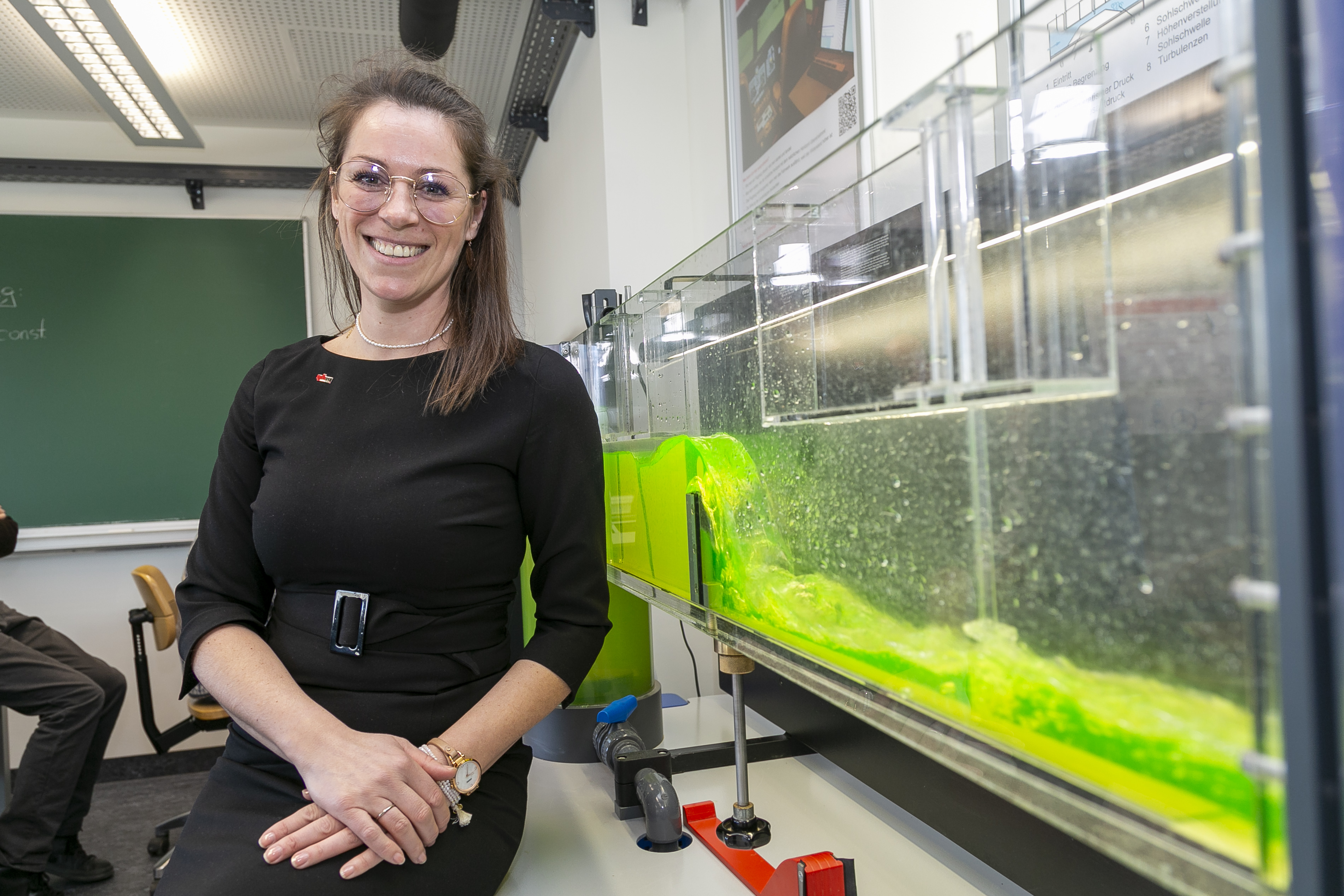„TU Graz Super Science Space“: A Science Lab for Children and Young People
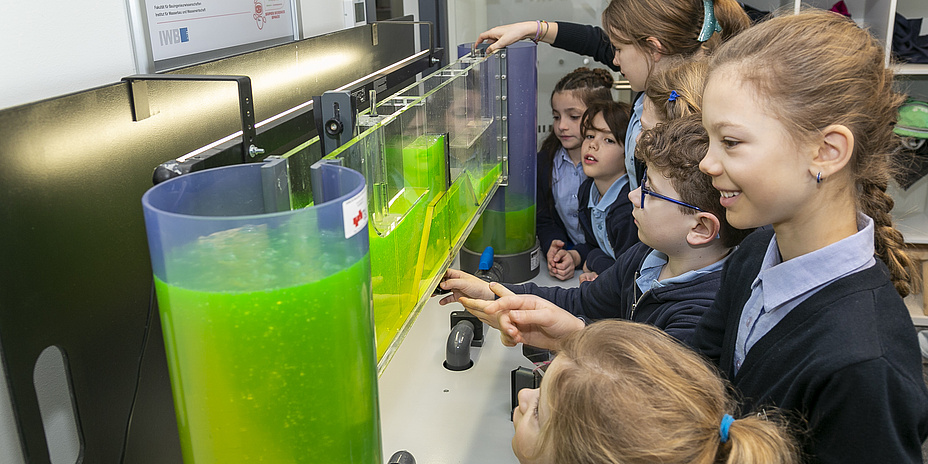
A mobile wind tunnel, an architectural drawing station, a virtual sandbox, a sound workshop, a virtual space station and much more. Children and young people can now immerse themselves in the exciting world of science in a total of 16 experimental stations at the TU Graz Super Science Space. The new science lab opened its doors on 9th March at Campus Infelldgasse of Graz University of Technology (TU Graz) in the presence of Harald Kainz, Rector of TU Graz, Manfred Eber, city councillor for finance, and Elisabeth Meixner, Styria’s director of education.
Supported by the City of Graz and the Styrian Department of Education, the TU Graz Super Science Space invites children and young people to learn about the diverse content of the MINKT subject areas of mathematics, informatics, natural science, art and technology in a varied and age-appropriate way ((MINKT subjects correspond roughly to STE(A)M subjects in the English-speaking area). On a good 200 square metres, children from kindergarten age to the end of the sixth form (senior high school) can carry out experiments from all the departments of TU Graz at a total of 16 stations with set-ups and experimental arrangements and thus develop individual skills and discover their own preferences.
The first university MINKT laboratory in Austria
The TU Graz Super Science Space is the first facility of its kind in Austria. In German-speaking countries, the “MINKT Lab” concept has already become established to some extent in the promotion of young researchers at universities; TU Munich and ETH Zurich, for example, offer similar facilities. The City of Graz supports the TU Graz Super Science Space project financially, and the Styrian Department of Education contributes materials and communicates the facility to schools.
TU Graz’s MINKT laboratory can be visited in the morning during regular lessons and in the afternoon for developing talented students during afternoon supervision. The rooms are also available for teacher training. During the school holidays, summer weeks or talent workshops are to be offered for a fee.
“It is a much more memorable experience for children and young people if they can experience experimentation workshops not only at school, but also directly on site on the TU Graz campus and thus in the immediate vicinity of science and research. With the TU Graz Super Science Space we invite young people to see for themselves the diversity and exciting possibilities of MINKT fields. And we’ll be delighted if this results in increased interest in studying at TU Graz,” says Harald Kainz, Rector of TU Graz.
“With around 14,000 students, TU Graz is an important factor in our city, which rightly enjoys an excellent international reputation due to its diverse and high-quality educational programmes. From the point of view of the City of Graz, passing on this abundant knowledge to children and young people in an age-appropriate manner is extremely worthy of support. In this way, the technological interests of children can be promoted in an exciting way and, conversely, TU Graz can win over one or two students of tomorrow,” says Manfred Eber, city councillor for finance.
Director of Education Elisabeth Meixner emphasises: “MINKT skills are particularly important for the further development of society. Curiosity, a willingness to experiment, a thirst for research – these are the ingredients for innovative and inspiring learning in this field. If this is presented in a varied, exciting and age-appropriate way, as in the MINKT laboratory at TU Graz, it can succeed in stimulating joyful learning and thus convey a positive feeling about MINKT subjects.”
Angelika Droisner-Schwingshackl, initiator and project manager of the TU Graz Super Science Space explains: “With the TU Graz Super Science Space, we want to offer an attractive teaching supplement with a practical focus that is tailored to current technological and scientific focal points. Our many years of experience with MINKT workshops for schoolchildren show us that children and young people immerse themselves much more deeply in the world of science when they can experience it directly on site at university. I am very grateful that we now have these opportunities all year round.”
The stations were developed and designed together with a total of 13 institutes of TU Graz. They are suitably combined and prepared depending on the age group, school level and desired focus. Angelika Droisner-Schwingshackl explains: “On the one hand, we offer the Experimental Workshop, in which children and young people explore the learning and experimental stations in the MINKT laboratory as a duo in around three to four school hours each. The second type of workshop is the Technical Learning Workshop, which is open to the partner schools of TU Graz in particular. These workshops last a whole semester and are integrated into the regular school curriculum with one or two lessons per week. Each week focuses on one station, and at the end of the semester the students develop their own projects.” In addition to this, there is a weekly “open lab” afternoon where children, young people, adults, institutes and companies are all equally welcome.
Registration and appointments for kindergartens and schools are now possible at supersciencespace@tugraz.at. More information about the entire offer of the "TU Graz Super Science Space" are available at https://super-science-team.tugraz.at/.
The 16 stations at a glance
- Deskbreeze – der mobile Windkanal
At this station, the flow lines of the wind are made visible. The air flow generated by fans can be seen using dry ice in a water bath.
- Construction & Drawing Station
With the support of architecture students, the children draw their vision of the “green house of the future”. When cutting up apples, the children learn what a floor plan is and what a section through a building is.
- Architecture & Conception of SpaceHere, there are exercises in spatial perception and simple model-building exercises that playfully teach basic knowledge about spatial experience and the design of the built environment.
- Virtual Sandbox
At this station, children and young people experience the basics of research using sand. From sand as a material to the stability of sand and questions of logic: What is heavier – dry sand or wet sand?
- Taylor-Couette Disc Contactor
The station shows the separation process of liquids.
- Model Train
At this station, children and young people can experience the workings of mechanics.
- Hydraulic Engineering – Mobile Water Circuit
With a mobile water circuit, the children and young people are shown the flow behaviour and fluid mechanics of water.
- Electronics
Here, children are allowed to carry out soldering themselves and make a soldered circuit board glow. This shows what electronics is and where microelectronics is needed.
- Electrical Engineering and Audio Engineering | Sound Workshop
In the sound workshop, the children and young people experience the technical background of acoustics and sound waves. They build loudspeakers and test their hearing.
- Mathematics
Fun practical examples from the exciting world of mathematics await you here.
- Geodesy – Virtual Reality
Here, virtual reality goggles allow virtual entry into the Katerloch cave near Weiz, the deepest dripstone cave in Austria, to take height measurements.
- Maroon – the Virtual Physics Lab
Maroon is a virtual physics laboratory that invites you to try out and understand scientific phenomena.
- Chemical Processes
At this station, the children and young people extract DNA from strawberries.
- Physics – Spectroscopy
Here, the children and young people explore how light is split up into colours.
- Flight Simulator
In the flight simulator you can take a virtual sightseeing flight over Graz and explore all the exact data and details.
- Space Station ISS
A virtual visit to the International Space Station (ISS).
Would you like to receive the latest stories, news, research stories, interviews or blog posts from TU Graz directly on your smartphone or in your email inbox? Subscribe to the TU Graz Telegram newsletter for free.
Kontakt
Angelika DROISNER-SCHWINGSHACKL
Project management of TU Graz Super Science Space
TU Graz | Office for Gender Equality and Equal Opportunity
Mobile: +43 664 88 783 181
angelika.droisner@tugraz.at
Kontakt Medienservice:
Susanne FILZWIESER
TU Graz | Communications and Marketing
Mobile: +43 664 608734566
susanne.filzwieser@tugraz.at
